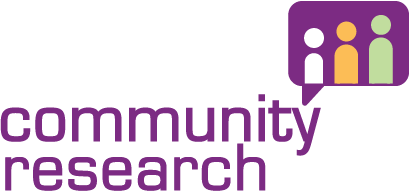Collaborative research: more than the sum of its parts
For many research projects, traditional qualitative and quantitative approaches are wholly appropriate. However, there are times we need to go beyond traditional research techniques, especially if a less siloed methodology is preferable – where the client is seeking a solution to an issue which involves multiple audiences, for instance.
On these occasions we tend to suggest collaborative programmes which bring together different audiences in a managed way. We have previously used such approaches to enable a variety of participants (for example, consumers and service providers; patients and health professionals) to work collaboratively and find solutions which suit both parties. Patients and the public bring their own perspectives and experiences; service providers, stakeholders and health professionals contribute knowledge of how systems work and the practical constraints under which they are operating. In collaboration, they can often find solutions which, separately, may elude them.
Careful consideration of the needs, expectations and concerns of each of the differing stakeholder audiences is vital – especially where we are mixing members of the public with professional audiences. It is important in designing a collaborative event that we pay attention to the ‘power balance’ or differential between members of the public and professionals. The latter are likely to have stronger views and feel they have more to say, and members of the public may defer to their opinions if the dynamics are not managed carefully. To mitigate this possible effect, we have a number of practical solutions:
Suggesting that the members of the public outnumber professionals or ‘experts’ at the events.
Holding a pre-event session with the public prior to the main event so that they do not come ‘cold’ to the collaborative session.
Creating agendas which include a range of approaches so that they will appeal to a diversity of participants, who will enjoy and feel comfortable with different kinds of activities.
Reassuring all participants that they have a valuable perspective and explicitly making public participants feel that they have a meaningful contribution to make.
Examples of when we have used collaborative research techniques are given below:
The General Osteopathic Council and the General Dental Council are currently exploring how they can better support the application of standards in context and in practice. They are working alongside Professor Bill Fulford of The Collaborating Centre for Values Based Practice in Health and Social Care and Professor Stephen Tyreman, British School of Osteopathy. Community Research helped design and deliver a collaborative workshop which created a productive forum for dialogue between patients and health professionals. Objectives were to identify the diverse range of individual values present within a consultation; explore barriers and enablers to making values explicit in a consultation from the perspectives of patient and practitioner; and to begin the process of developing simple questions or tools to make more explicit patient and practitioner values, with the aim of a supporting better communication and consent in consultations.
Arts Council England was developing a national engagement campaign to encourage people across England to enjoy artistic experiences. We conducted some traditional qualitative and quantitative research but built on this insight by involving the public and stakeholders in a collaborative dialogue, generating campaign ideas that they believed would directly impact arts consumption behaviours.
Consumer Focus already knew that there can be a risk of disadvantage for low-income consumers in the products and services they receive. Financial services providers, for example, can see low income consumers as ‘high risk’ and/or not as profitable as those on higher incomes. Consumer Focus wished to explore these issues in a way that would challenge the financial services industry specifically and help to create a change in outlook and policy that might ultimately give low income consumers a fairer deal. The project culminated in a full-day collaborative workshop, during which a cross-section of low income consumers worked alongside financial services sector providers. Together they developed new ideas designed to address some of the key barriers and concerns. The result was the generation of a very wide range of embryonic ideas that might help to better address the financial services needs of low income consumers.
We would be very happy to discuss how collaborative research could be a solution to your research needs.
